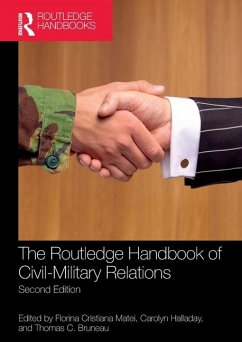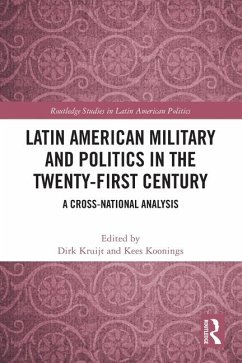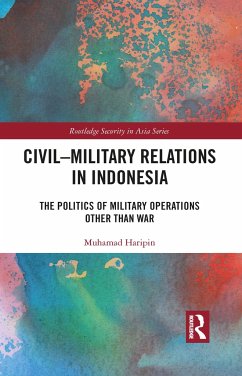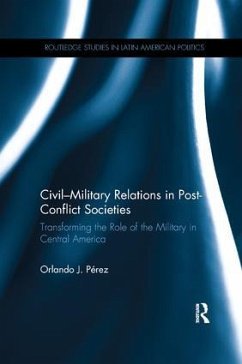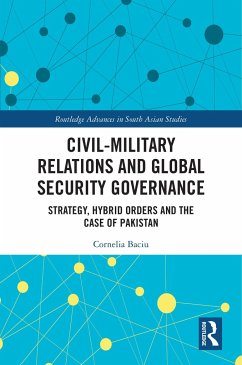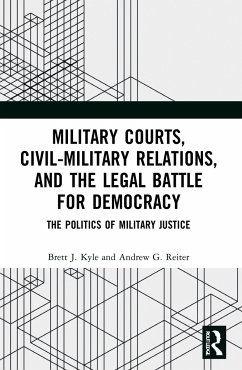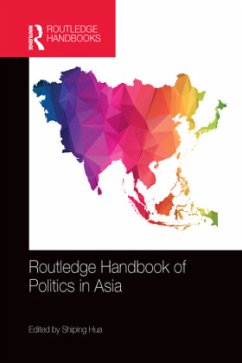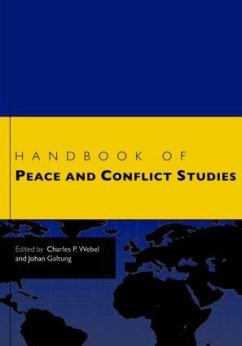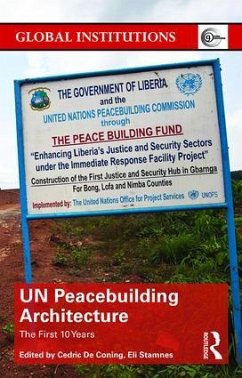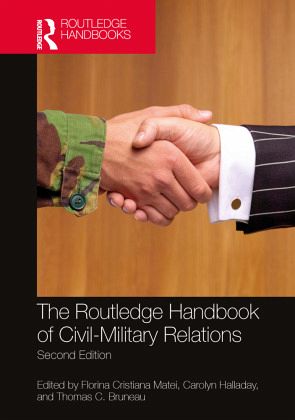
The Routledge Handbook of Civil-Military Relations
Versandkostenfrei!
Versandfertig in 6-10 Tagen
229,99 €
inkl. MwSt.

PAYBACK Punkte
115 °P sammeln!
This second edition of The Routledge Handbook of Civil-Military Relations offers a wide-ranging, internationally focused overview of the field of civil-military relations.The armed forces are central actors in most societies and are involved in many different roles. Amongst other activities, they engage in peace operations, support the police in fighting crime, support civilian authorities in dealing with natural disasters, and fight against terrorists and in internal conflicts. The existing literature on this subject is limited in its discussion of warfighting and thus does not do justice to ...
This second edition of The Routledge Handbook of Civil-Military Relations offers a wide-ranging, internationally focused overview of the field of civil-military relations.
The armed forces are central actors in most societies and are involved in many different roles. Amongst other activities, they engage in peace operations, support the police in fighting crime, support civilian authorities in dealing with natural disasters, and fight against terrorists and in internal conflicts. The existing literature on this subject is limited in its discussion of warfighting and thus does not do justice to the variety of roles. This second edition not only fills this important lacuna but offers an up-to-date comparative analysis and provides a conceptual framework to analyze how strategies can realistically be implemented. Amalgamating ideas from key thinkers in the field, the book is organized into three main thematic parts: Part I: Civil-Military Relations in Non-Democratic States and Illiberal Democracies; Part II: Civil-Military Relations in New Democracies; Part III: Civil-Military Relations in Established Democracies.
This handbook will be essential reading for students and practitioners in the fields of civil-military relations, defense studies, war and conflict studies, international security, and IR in general.
The armed forces are central actors in most societies and are involved in many different roles. Amongst other activities, they engage in peace operations, support the police in fighting crime, support civilian authorities in dealing with natural disasters, and fight against terrorists and in internal conflicts. The existing literature on this subject is limited in its discussion of warfighting and thus does not do justice to the variety of roles. This second edition not only fills this important lacuna but offers an up-to-date comparative analysis and provides a conceptual framework to analyze how strategies can realistically be implemented. Amalgamating ideas from key thinkers in the field, the book is organized into three main thematic parts: Part I: Civil-Military Relations in Non-Democratic States and Illiberal Democracies; Part II: Civil-Military Relations in New Democracies; Part III: Civil-Military Relations in Established Democracies.
This handbook will be essential reading for students and practitioners in the fields of civil-military relations, defense studies, war and conflict studies, international security, and IR in general.



